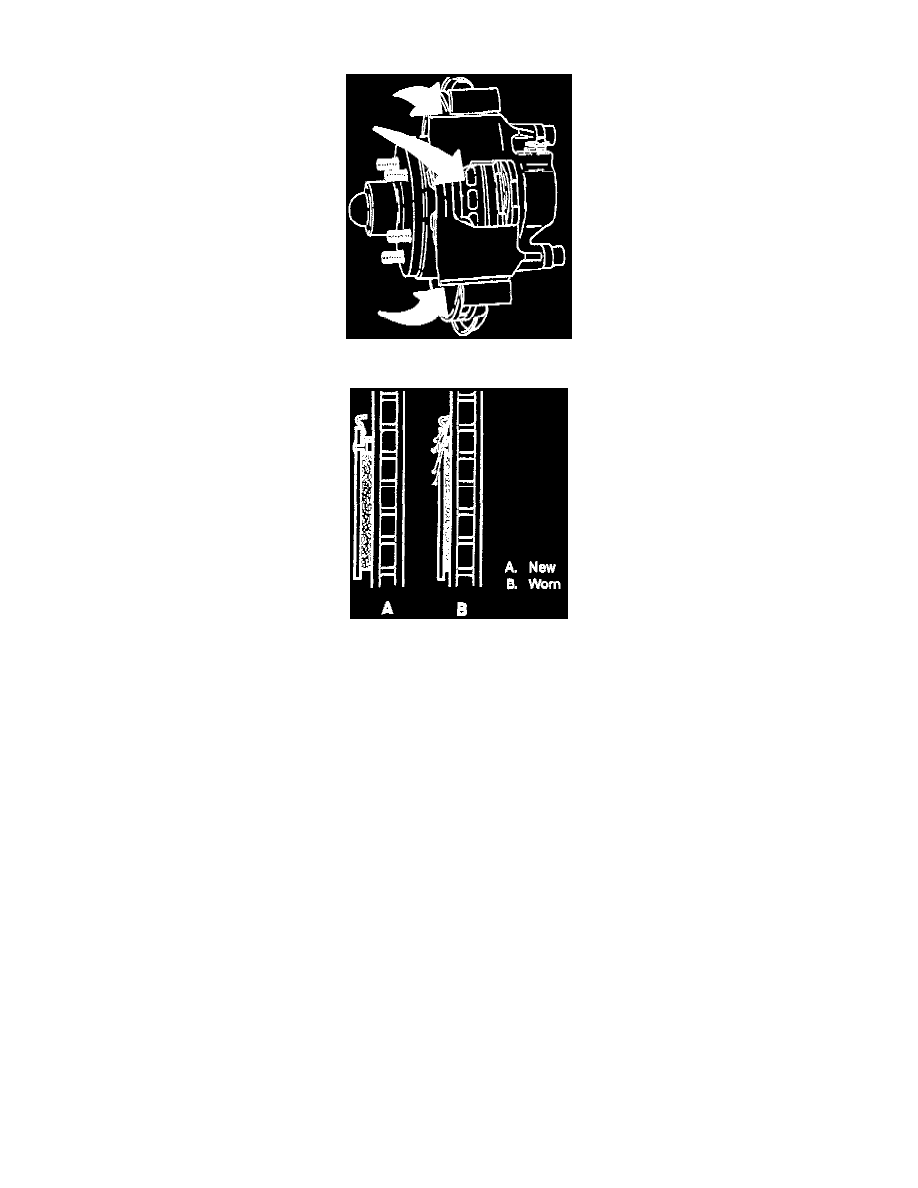G 1500 1/2 Ton Van V6-4.3L VIN W (1997)

Brake Pad: Testing and Inspection
Lining Inspection Points
Wear Indicator
INSPECTION POINTS
Inspect the brake linings every 6,000 miles and any time the wheels are removed (tire rotation, etc.). Check both ends of the outer lining by
looking in at each end of the caliper. These are the points where the highest rate of wear normally occurs. At the same time, check the thickness of
thinner lining to make sure it has not worn prematurely. Some inboard shoe and linings have a thermal layer against the shoe, integrally molded
with the lining. This extra layer should not be confused with uneven inboard-outboard lining wear.
Thickness Check
Look down through the inspection hole in the top of the caliper to view the inner lining. Replace disc brake shoe and lining assemblies whenever
the thickness of any lining is worn to with in 0.76 mm (0.030 inch) of the shoe. Replace riveted shoe and lining assemblies when the lining is worn
within 0.76 mm (0.030 inch) of any rivet head. Always replace disc brake shoe and lining assemblies as a complete axle set.
Flatness Check
Check the flatness of the brake pads. Place the inboard and outboard lining surfaces together and check for a gap between the lining, surfaces. The
gap should not exceed 0.13 mm (0.05 inch) at the middle of the lining surfaces This measurement applies to new or used shoe and lining
assemblies. The disc brake shoe and lining assemblies on all models have wear indicators that contact the rotor and make noise when the linings
wear to the point of needing replacement. A loud scraping sound can be heard when this occurs.
